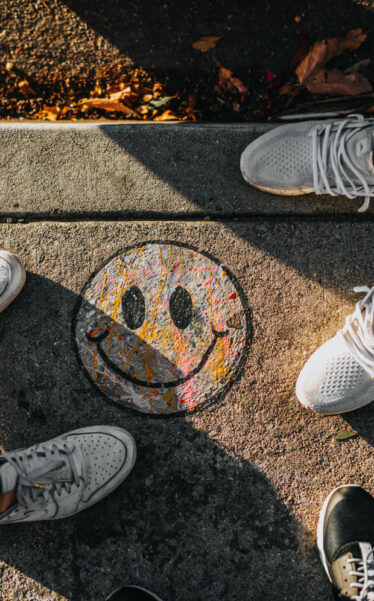Hope is one of the most important mental traits in life. It is undoubtedly one of the most important traits of positive people.
Hopeful people can face even the most negative times with a positive attitude. Because optimism has many health benefits, hope significantly improves mental health.
Hope can be a desire for something to happen, a wish for things to change for the better, or a particular dream or aspiration. It is important for us to have hope in our lives, to look positively into our future, and to be a major protective factor in helping us tackle potentially dangerous ideation or intrusive thoughts.
What is hope?
According to the Merriam-Webster dictionary, hope is a synonym and refers to the desire for something to happen, accompanied by the expectation or belief that it will be fulfilled or succeed.

To be hopeful is to look at the future positively, to see opportunity in challenges (rather than challenges in opportunities), to “look on the bright side of life.”
Hope is the ability to see the possible good in future events, especially when those events are potentially negative.
Hope is not blindly expecting every positive thing to fall into your lap, nor expecting yourself to magically avoid every potential danger. This mentality can lead to inadvertent self-harm (for instance, not going to the doctor about pain in your chest because you’re blindly optimistic everything will be okay could potentially lead to your death).
It’s this idea of “false hope” or “blind hope” that has given hope a bad name in recent years.
People often think that hopeful people are naive, even foolish, and that they believe good things will happen when in truth they never will.
Heck, many of my own friends think I am naïve and foolish for pouring countless hours into this website in the hope that it might someday pay off big time.
Talent, skill, ability—whatever you want to call it—will not get you there. Sure, it helps. But a wealth of psychological research over the past few decades show loud and clear that it’s the psychological vehicles that get you there. You can have the best engine in the world, but if you can’t be bothered to drive it, you won’t get anywhere.
Psychologists have proposed lots of different vehicles over the years. Grit, Conscientiousness, self-efficacy, optimism, passion, inspiration, etc. They are all important. One vehicle, however, is particularly undervalued and underappreciated in psychology and society. That’s hope.
Hope often gets a bad rap. For some, it conjures up images of a blissfully naïve chump pushing up against a wall with a big smile. That’s a shame. Cutting-edge science shows that hope, at least as defined by psychologists, matters a lot.
Hope Theory
According to 20 years of scientific research conducted by positive psychology founder Martin Seligman, hope reduces feelings of helplessness, boosts happiness, reduces stress, and improves our quality of life.
Obviously, hope is not a brand new concept in psychology. In 1991, the eminent positive psychologist Charles R. Snyder.

Snyder was an American psychologist who specialized in positive psychology. He received international recognition for his work in clinical, social, personality, and health psychology. His theories from the ’80s and ’90s relate to, human responses to personal feedback, the human need for uniqueness, and the hope motive.
Thanks to his work, more studies were conducted to link increased levels of hope to academic and athletic performance.
By helping people become high-hopers, they gain a more positive outlook on life. In simplified terms, this is what Snyder’s Hope Theory is about.
Hope consists of both cognitive elements and affective elements. Snyder’s Hope Theory includes goals, paths, and freedom of choice. According to him, there are at least three components that people can relate to hope, being:
1. You need to have focused thoughts
2. You must develop strategies in advance to achieve these goals
3. You have to be motivated to make the effort required to actually reach these goals
The more the individual believes in their own ability to achieve the components listed above, the greater the chance that they will develop a feeling of hope.
Goals are abstract and mental. They have the power to guide human behavior. Snyder noticed that much of human behavior is goal-oriented. Pathways focus on the perceived ability to plan multiple routes. He distinguished that two other important factors influence movement towards the goal:
Pathways thinking: This relates to the human ability to generate different pathways from the present to the desired future. This is about the cognitive ability to produce a pathway that leads to the goal and to first think about it.
Agency Thinking: This refers to the level of intention, confidence, and the human ability to actually follow those different pathways to the desired future.
Goals
The goals themselves also play an important role in Snyder’s Hope Theory. Goals that are valuable but uncertain are described as the anchors of Snyder’s Hope Theory.
Goals offer direction and guide you to the final destination. Obviously, barriers can also play a role given that they may make it difficult to reach the goals.

Why is hope important?
Well, life is difficult. There are many obstacles. Having goals is not enough. One has to keep getting closer to those goals, amidst all the inevitable twists and turns of life. Hope allows people to approach problems with a mindset and strategy-set suitable to success, thereby increasing the chances they will actually accomplish their goals.

Hope is not just a feel-good emotion, but a dynamic cognitive motivational system. Under this conceptualization of hope, emotions follow cognitions, not the other way round. Hope-related cognitions are important. Hope leads to learning goals, which are conducive to growth and improvement.
People with learning goals are actively engaged in their learning, constantly planning strategies to meet their goals, and monitoring their progress to stay on track.
A bulk of research shows that learning goals are positively related to success across a wide swatch of human life—from academic achievement to sports to arts to science to business.
Those lacking hope, on the other hand, tend to adopt mastery goals. People with mastery goals choose easy tasks that don’t offer a challenge or opportunity for growth. When they fail, they quit.
People with mastery goals act helpless and feel a lack of control over their environment. They don’t believe in their capacity to obtain the kind of future they want. They have no hope.
The side of Hope
Science is on the side of hope. Snyder and his colleagues came up with a way of measuring hope, both as a stable trait of an individual and as a state one can be in anytime. Whether measured as a trait or a state, hope is related to positive outcomes.
Hope is also a very personal thing and it is important that you do not measure your goals influenced by others. Your aspirations are personal and important to you.

Hopelessness is a feeling that things will not and cannot change and creates a sense that there is no solution to a problem, which can be an increase the risk of suicide. Whilst hopelessness is not the sole cause of suicide, having hope in our lives can significantly reduce the risk.
Most people associate hope with a dire situation. People hope to get out of difficult circumstances. That is often when people do find themselves hoping fervently! But hope also can provide the key to making everyday life better.
To have hope is to want an outcome that makes your life better in some way. It not only can help make a tough present situation more bearable but also can eventually improve our lives because envisioning a better future motivates you to take the steps to make it happen. Whether we think about it or not, hope is a part of everyone’s life. Everyone hopes for something. It’s an inherent part of being a human being. Hope helps us define what we want in our futures and is part of the self-narrative about our lives we all have running inside our minds.


